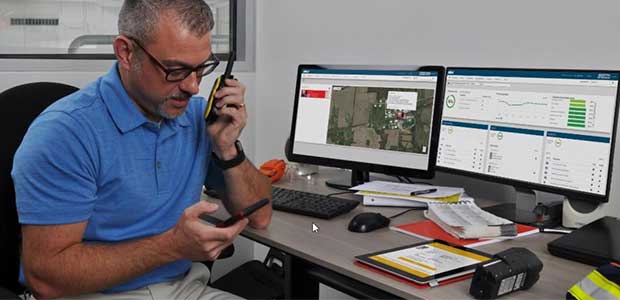
Live Monitoring: The Pinnacle of Real-Time Detection
Live monitoring brings an added dimension to real-time detection today.
- By Dave D. Wagner
- Mar 01, 2022
The term “real-time detection” is not new to the industrial hygiene and safety community, with industrial hygienists and safety professionals having dealt with real-time detection devices for many, many years. The canary in the cage is a very rudimentary example of an early portable, real-time detector for indicating the lack of oxygen or presence of poisonous gases. Simply, if the canary was alive, so were you. It doesn’t get much more real time than that.
As technology progressed, some applications replaced canaries with flame safety lamps. The lamps added a slightly more quantitative element to the detector than the purely qualitative canary, with the level of the flame giving some indication of the concentration of oxygen or methane in the atmosphere. To quote Jeff Probst from the hit television series Survivor, “Fire represents your life. When your fire’s gone, so are you.” From a detection standpoint, the flame safety lamp really was both as crude and as simple a real-time detector as that.
As we moved into the ‘80s, real-time detection became synonymous with electronic monitoring equipment. Electronic instruments, first with analog and then with digital readouts, provided direct reading quantification of specific gas hazards. However, they also brought more complexity to real-time detection. Along with a direct reading, the instruments came with multiple alarm points, indicators and other features that required users to interpret and understand the readings and know how to respond in various situations. This complexity compounded as these instruments expanded to detect three, four, five and even six gases simultaneously. Gone are the days when it was as simple as seeing the canary down or the flame go out and leaving the area immediately.
Real-Time Detection: Striking a Balance between Visibility and Complexity
Real-time detection certainly provides a more precise indicator of hazardous conditions than canaries and flames and a more efficient process than old school analytical methods of collecting air samples, sending them to a lab and then waiting for results. Still, a number of applications dismiss the value of real-time detection. Many would argue, for example, that analytical methods like collecting samples and sending them to a lab are the only acceptable means of performing personal gas exposure assessments. These arguments ignore that time is of the essence and lives may hang in the balance.
There is tremendous value real-time information on gas hazards and immediate alerts for dangerous environments.
The problem with real-time detection from portable devices is that it may give the user too much information, creating too much opportunity for complacency and human error that can lead to tragedy. Very rarely today is there a straightforward go/no go application involving a gas detector. Users need to be trained on how to react when their monitor enters a low alarm condition and then what to do if it extends to a high alarm condition. What do you to do if your detector reaches a TWA or STEL condition for a toxic gas? Unfortunately, too often the instinct is to push through to finish the job when conditions are just past the alarm threshold. After all, there is work to be done, and users are accustomed to regular beeping and flashing.
Datalogging monitors are intended to provide safety and industrial hygiene professionals with even more information on the environment. However, they may lead to more questions than answers. A review of stored data often reveals hazards and alarm conditions that may have resulted in “near misses.” These conditions often go unrecognized or unreported because safety and industrial hygiene professionals lack visibility into what is really happening in the field. In follow-up investigations and interviews, users rarely remember the instrument going into alarm, what they were doing at the time or where they were doing it. To put it simply, it is difficult to eliminate hazards when the details behind them are lost in the data.
Real-Time Detection Today: The Benefits of Live Monitoring
Live monitoring brings an added dimension to real-time detection today. Wireless interfaces in portable instruments allow control room operators or other safety contacts to remotely monitor gas detection equipment in the field in real time. They can view the status of portable gas detection equipment while it is being used, much like fixed detection equipment.
A remote monitoring center can see where an instrument is being used, who is using it and what conditions the monitor is currently being used in. Safety professionals or trained control room operators with higher decision-making capability can see trending readings from monitors and be notified immediately when hazardous conditions appear, so they can pull workers from the field, summon help or notify emergency response personnel accordingly. Expanding real-time gas detection to include live monitoring adds a safety blanket to users and reduces the decision-making burden on users.
Those committed to the old school methods and those satisfied with the status quo in real-time detection today have been skeptical and have shied away from live monitoring, citing concerns about the reliability of wireless equipment in safety applications. In their minds, equipment used in safety applications must be one hundred percent reliable one hundred percent of the time. It is a classic example of letting perfect get in the way of great, and it puts workers at unnecessary risk.
In the end, no system, no equipment and no user can offer that perfect level of assurance. Live monitoring helps answer the questions of what, when and where surrounding real-time detection and takes a giant step upward toward the pinnacle on the hierarchy of safety.
This article originally appeared in the March 1, 2022 issue of Occupational Health & Safety.